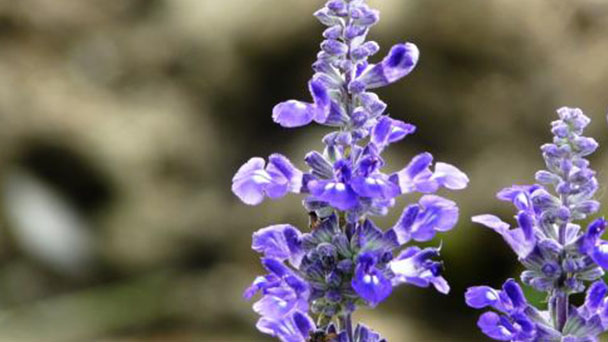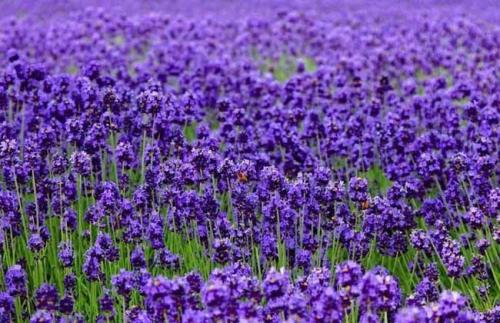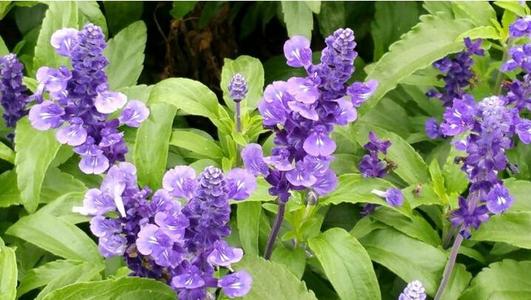Common Sage (Salvia officinalis) Profile
Written by Maggie
Oct 28 2021

Common Sage, scientific name Salvia officinalis, is an aromatic plant of the genus Common Sage in the Lamiaceae, having woody stems, grayish-green leaves, and blue to purplish-blue flowers. Native to southern Europe and Mediterranean coastal areas. Common Sage has many different uses and benefits, and some of the same plants have the same benefits. Common Sage is often grown as a kitchen herb or as a medicinal herb.

Fruit: The Common Sage fruit is a nut, the nutlet is nearly spherical, about 0.25cm in diameter, dark brown, smooth.
Common Sage PictureCommon Sage CharacteristicsCommon Sage StemCommon Sage LeavesCommon Sage FlowersCommon Sage Origin Common Sage UsesPropagation of Common SageCommon Sage sowing propagationCommon Sage cutting propagationCommon Sage growing method
Common Sage Picture

Common Sage Characteristics
Common Sage Stem
Common Sage is a perennial herb, roots woody; Stem is erect, woody at base, four-edged, white tomentose, much branched.Common Sage Leaves
Leaf blade of Common Sage is oblong or elliptic or ovoid, 1 -- 8 cm long and 0.6 -- 3.5 cm wide, apex acute or acuminate, rarely acute, base rounded or sub truncate, margin with small round teeth, hard paper, two masks finely wrinkled, covered with white pubescent; Petiole of Common Sage is 3 cm to subsessile, recumbent, densely white pubescent.Common Sage Flowers
Common Sage cymes have 2 to 18 flowers, consisting of racemes with terminal growth of 4 to 18 cm; Farthest bract are leaflike, distally broadly ovate, apex acuminate, base rounded, sessile, longer than calyx, sparsely short tomentose or ciliate; Pedicels of Common Sage are ca. 0.3 cm, densely white tomentose with inflorescence rachis; Calyx of Common Sage likes bell, and the flowering time of 1-1.1 cm, results, as long as 1.5 cm, outside on the edge of the pulse and a short nap, more than with golden brown glandular dots, many with purple, inside with micro hard hairs, two lip, a few cracks to central, upper lip shallow crack into 3 teeth, tooth cone tip, the tooth is small, lower lip split in two and a half teeth, teeth triangular, apex acuminate;Corolla purple or blue, 1.8 1.9 cm long, was a short nap, above the lip is dense, inside is about 0.3 cm from crown cylinder base level to incomplete thin soft plush ring, crown tube length, 0.9 cm long, on the meyeri gradually increased, to the throat is about 0.7 cm wide, crown canopy two lip, upper lip straight, ovoid, ca. 0.6 cm long, 0.55 cm wide, apex slightly concave, lower lip with a wide width of about 1 cm, lobes in the heart, 0.5 cm long, 0.8 cm wide, apex rounded emarginate, lateral lobes ovoid, apex sharp, From the afterveins extending upward into a small tip, about 0.3 cm wide; Common Sage can produce 2 stamens, extending to the upper lip, hidden, filaments flat, about 0.5 cm long, diaphragms about 0.3 cm long, the upper and lower arms of the same length, the lower chamber is small, united with each other; Style of Common Sage is extruded, apex unequal 2-lobed, posterior lobes short; Disk of Common Sage is slightly enlarged anteriorly.Fruit: The Common Sage fruit is a nut, the nutlet is nearly spherical, about 0.25cm in diameter, dark brown, smooth.
Common Sage Origin
Common Sage originated in Southern Europe and Mediterranean coastal areas. Common Sage is planted for gardening and landscape layout.Common Sage Uses
Gardening and landscape layout: Common Sage is suitable for flower beds or potted plants, especially large area cultivation, flowering season, the landscape is very soft and elegant. 2. Medicinal: Common Sage taste: root, whole grass: bitter, sweet, flat. Utility: leaf: substitute tea drink for sterilization, tonic agent; Whole Common Sage grass: Containing hormone precursors. Treatment of irregular menstruation and menopausal symptoms. Common Sage can be used as medicinal and aromatic oil plants: the whole Common Sage contains volatile oil, can be used for making spices, leaves of the extract for laryngitis cough. Common Sage is often grown for kitchen herbs or medicinal herbs. In southern Europe, plants similar to Common Sage are sometimes grown for herbs and herbs. These plants are often confused with the real Common Sage.Propagation of Common Sage
Common Sage sowing propagation
Sowing can be done in spring and early fall. In order to improve the emergence rate and early emergence of seedlings of Common Sage before sowing, the seeds can be soaked in warm water at 50℃ first. When the temperature drops to 30℃, the seeds of Common Sage can be rinsed several times with water, and then placed at 25 ~ 30℃ under constant temperature for accelerating germination or soaked in water for 24 hours after sowing. Direct seeding or seedling transplanting can be .Due to the small seed size of Common Sage, shallower sowing is preferred. After sowing, cover with thin soil and sprinkle water frequently to keep the soil moist.Common Sage cutting propagation
Select the less tender tip of the top of the branch of Common Sage with a length of 5-8 cm, cut it at the lower joint of the stem, pick 2-3 leaves at the base, insert them into the seedbed with a depth of 2.5-3 cm according to the row spacing of 5 cm ×5 cm. After insertion, water the plants and cover them with plastic film to keep them moist. After issuing new roots in 20 ~ 30 days, plant planting was conducted according to the density of row spacing (45 ~ 50) cm × (25 ~ 30) cm.Common Sage growing method
Adequate sunshine and good ventilation, good drainage of sandy loam or deep soil loam is better, conducive to Common Sage growth. Seed direct seeding, 3-5 seeds in each hole, germination after a week or when the plant is 5-10cm high should be thin. Distance between 20 to 30 cm. After becoming a plant, it can be cut again to increase the distance and the growth is more vigorous. Different varieties of Common Sage require different light intensities, which should be confirmed and understood before cultivation.
Latest Updated
- Benefits of Bugleweed - 7 Science-backed Health Benefits
- Bugleweed Dangers & Side Effects - Is It Poisonous?
- How to Plant Evergreen Trees - What You Should Know
- When to Plant Evergreens - Grow Guide for Evergreen Trees
- 12 Wonderful Evergreen Shrubs for Your Garden
- 12 Popular Evergreen Plants with Pictures for Beginners
- When And How To Prune A Lilac Bush Like a Pro
- How to Grow & Care for Lilac Vine (Hardenbergia Violacea)
- Japanese Lilac Tree (Syringa Reticulata) Care & Propagation Guide
- Shumard Oak Pros and Cons - What to Know
Popular Articles
- Winter maintenance of Antirrhinum Majus
- How to Grow Terminalia Mantaly Tree
- How to Grow and Care for Crossostephium Chinense
- How to grow Antirrhinum Majus in spring
- Peristeria Elata (Dove Orchid) Profile: Info & Care Guide
- Underwatered Snake Plant (Sansevieria Trifasciata) - Signs And How To Fix
- How to Care for Brazilian Jasmine Plant (Mandevilla Sanderi)
- How to Grow & Care for Graptopetalum Purple Delight in Summer
- Rosa Chinensis (China Rose): Plant Growing & Care Tips
- How to Care for Baby Sun Rose (Aptenia Cordifolia)